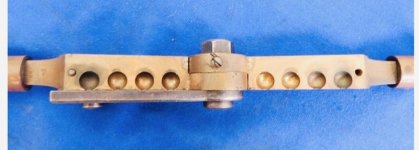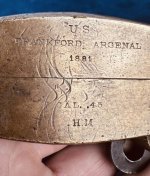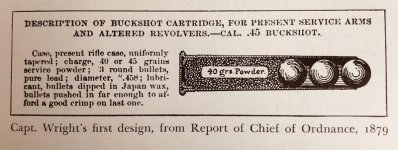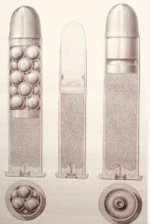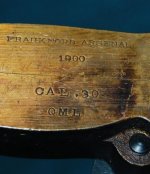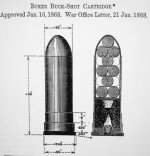Smith & Wesson introduced a GALLERY bullet mold in approximately 1886 with the TARGET NM3. It was at this time that the improved reloading kit included both a conical and round ball bullet mold (aka Peanut mold). Also included in the kit was two powder scoops. One was specifically designed for a very light GALLERY LOAD for indoor target shooting. That was the commercial concept.
PRIOR to the GALLERY COMMERCIAL CONCEPT the Military had introduced a multi-ball “BUCKSHOT” brass gang mold for Military use in the Springfield rifle/carbine, Colt 45 SAA, and the Schofield revolver.
THESE ARE NOT GALLERY MOLDS!
I’d just like to see the Gallery identifier removed from Military Multi-Ball molds. They were not Gallery molds. VERY FAR FROM IT!
Photos depict the Frankford Arsenal “BUCKSHOT” molds that were actually issued and recorded as such in Military records. They were used heavily during the Indian Wars in both the Rifle/Carbine and pistols from 1879-1904. Military personnel would hand load as trained buckshot loads in these firearms mentioned.
A quote from various Cavalry officers in documented Military records from the early 1880’s;
THE MULTI-BALL CARTRIDGE INCREASES THE EFFECTIVE (DESTRUCTIVE) RANGE OF THE PISTOL GREATLY.
Murph
PRIOR to the GALLERY COMMERCIAL CONCEPT the Military had introduced a multi-ball “BUCKSHOT” brass gang mold for Military use in the Springfield rifle/carbine, Colt 45 SAA, and the Schofield revolver.
THESE ARE NOT GALLERY MOLDS!
I’d just like to see the Gallery identifier removed from Military Multi-Ball molds. They were not Gallery molds. VERY FAR FROM IT!
Photos depict the Frankford Arsenal “BUCKSHOT” molds that were actually issued and recorded as such in Military records. They were used heavily during the Indian Wars in both the Rifle/Carbine and pistols from 1879-1904. Military personnel would hand load as trained buckshot loads in these firearms mentioned.
A quote from various Cavalry officers in documented Military records from the early 1880’s;
THE MULTI-BALL CARTRIDGE INCREASES THE EFFECTIVE (DESTRUCTIVE) RANGE OF THE PISTOL GREATLY.
Murph
Attachments
Last edited:

